Brick Elements: Element Types
Description
A range of brick elements is available to provide flexibility for the meshing of arbitrarily shaped 3D solids. These include tetrahedra, wedges, pyramids and hexahedra. All of these elements are available in both a linear (low order) and a quadratic (high order) form. The quadratic elements include a mid-side node mid-way along each edge.
The natural coordinate system of the brick elements is shown in the figures below.
Element Types
Tetra4

A tetrahedral element that has a linear displacement field in all directions. The entire element has a constant stress and strain value as it consists of only a single integration point.
Tetra10
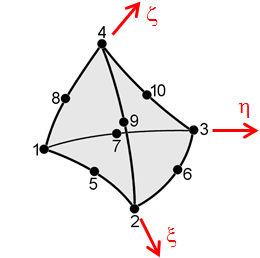
A tetrahedral element that has a quadratic displacement field in all directions. The mid-side nodes offer additional flexibility in modelling curved edges and curved surfaces.
Wedge6
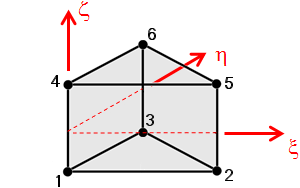
A wedge element that has a linear displacement field in all directions.
Wedge15
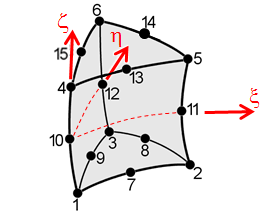
A wedge element that has a quadratic displacement field in all directions. The mid-side nodes offer additional flexibility in modelling curved edges and curved surfaces.
Hexa8
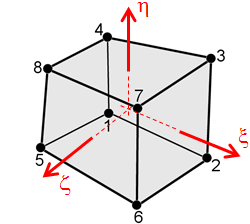
A hexahedral element that has a linear displacement field in all directions plus and option to include internal degrees of freedom (see Brick Elements: Bubble Modes) to enhance its flexibility and improve performance.
Hexa16
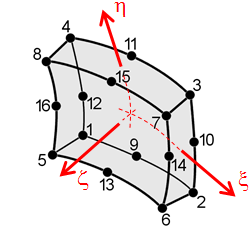
A hexahedral element of which all planes between the two faces enclosed by edges with mid-side nodes exhibit a quadratic displacement field whereas all planes between the two faces that have two edges without mid-side nodes exhibit a linear displacement field. Edges with mid-side nodes offer additional flexibility in modelling curved edges and curved surfaces.
Hexa20
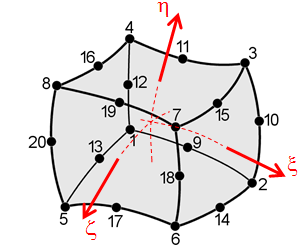
A hexahedral element that has quadratic a displacement field in all directions. The mid-side nodes offer additional flexibility in modelling curved edges and curved surfaces.
Pyra5
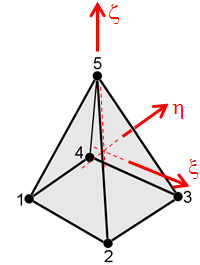
A pyramidal element that has a linear displacement field in all directions.
Pyra13
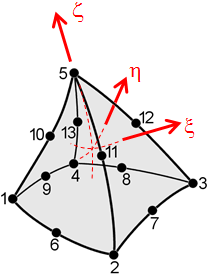
A pyramidal element that has a quadratic displacement field in all directions. The mid-side nodes offer additional flexibility in modelling curved edges and curved surfaces.
See Also